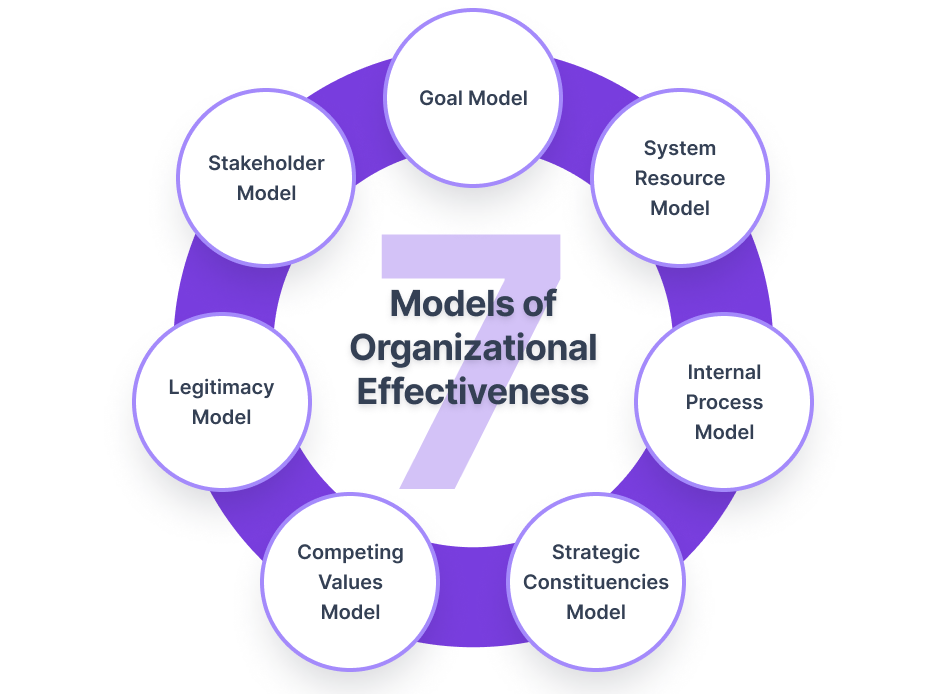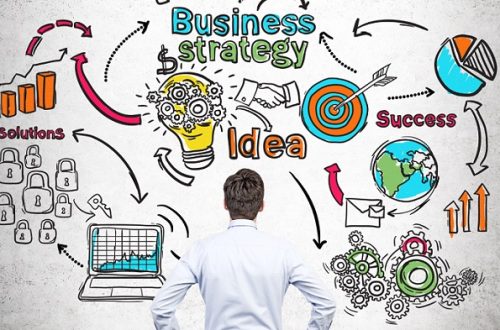In today’s fast-changing business environment, organizational effectiveness serves as the foundation for sustainable success. It determines how efficiently a company achieves its objectives, utilizes resources, and responds to challenges. A business with strong financial backing or an innovative product may still fail if its internal systems, culture, and leadership aren’t aligned. Organizational effectiveness bridges that gap, ensuring every element of the business works in harmony toward a common goal.
What is Organizational Effectiveness?
Organizational effectiveness is the ability of a company to achieve its desired results by aligning its strategy, people, processes, and culture. It’s not just about working harder but about working smarter—achieving maximum output with optimal use of resources while maintaining quality and adaptability.
Core Attributes of an Effective Organization
- Strategic clarity – Everyone understands and supports the company’s mission and goals.
- Operational excellence – Processes are efficient, scalable, and outcome-driven.
- Employee engagement – People are motivated, empowered, and aligned with company values.
- Agility and adaptability – The organization can pivot quickly in response to market or technological changes.
- Continuous learning – Feedback loops and knowledge sharing promote innovation.
- Sustainable growth – Results are consistent and not dependent on short-term wins.
Why Organizational Effectiveness Matters for Business Success
Organizational effectiveness impacts every layer of a business—from productivity and profitability to culture and innovation. When a business functions effectively, it experiences measurable and lasting growth.
Key Reasons It Matters
- Enhances productivity: When teams understand their objectives and processes are streamlined, productivity naturally rises.
- Improves profitability: Efficient resource use and strategic focus lead to higher profit margins.
- Boosts employee morale: People perform best when roles are clear and leadership is supportive.
- Increases customer satisfaction: Effective organizations deliver consistent and superior experiences.
- Strengthens resilience: Effective systems help businesses stay strong and adapt during disruptions.
The Four Pillars of Organizational Effectiveness
To achieve lasting effectiveness, businesses must focus on four interrelated pillars that drive overall performance.
1. Strategic Alignment
Strategic alignment ensures that everyone in the organization is moving in the same direction. It connects day-to-day operations with long-term business goals.
Why It Matters: Without alignment, teams may chase different objectives, leading to wasted effort and confusion.
How to Build It:
- Translate corporate goals into measurable departmental objectives.
- Communicate the vision consistently across all levels.
- Set clear performance indicators linked directly to business strategy.
- Review alignment regularly during business reviews.
2. Structure and Processes
An effective organizational structure enables smooth coordination, accountability, and speed in decision-making. Well-designed processes eliminate redundancy and ensure quality.
Why It Matters: A poor structure creates confusion, slows decisions, and weakens accountability.
How to Improve It:
- Define clear roles, responsibilities, and reporting relationships.
- Streamline workflows and remove non-value-adding steps.
- Adopt digital tools to automate routine processes.
- Encourage cross-functional collaboration to avoid silos.
3. People and Leadership
People are the heart of organizational effectiveness. The right talent, empowered by effective leadership, drives every successful strategy.
Why It Matters: Even the best systems fail without capable, motivated, and well-led people.
How to Strengthen This Pillar:
- Invest in leadership development programs.
- Promote a culture of accountability and trust.
- Align rewards with performance and organizational goals.
- Support employee growth through continuous learning and upskilling.
4. Culture and Continuous Improvement
An organization’s culture defines how people behave when no one is watching. A strong culture reinforces desired behaviors and encourages improvement.
Why It Matters: Culture acts as the multiplier of strategy—it determines how effectively plans are executed.
How to Cultivate It:
- Define and communicate core organizational values.
- Recognize and reward cultural role models.
- Encourage open feedback and innovation.
- Embrace continuous improvement initiatives like Kaizen or Lean.
Measuring Organizational Effectiveness
Measurement is the foundation of improvement. You can’t enhance what you don’t measure. The key is to track both leading (predictive) and lagging (outcome-based) indicators.
Key Metrics to Track
- Strategic metrics: Market share, profitability, growth rate, customer lifetime value.
- Operational metrics: Process efficiency, delivery timelines, error rates, and quality levels.
- People metrics: Employee engagement scores, turnover rates, training completion, and internal promotion rates.
- Customer metrics: Net Promoter Score (NPS), customer retention, satisfaction ratings.
- Adaptability metrics: Speed of decision-making, innovation rate, and number of new initiatives implemented.
Best Practices for Measuring Effectiveness
- Focus on a few critical KPIs rather than tracking too many.
- Create clear ownership for each metric.
- Use data dashboards for real-time visibility.
- Combine quantitative results with qualitative insights from surveys or interviews.
- Review metrics periodically and adjust based on lessons learned.
Common Barriers to Organizational Effectiveness and How to Overcome Them
Achieving organizational effectiveness is a continuous journey that often faces resistance. Understanding potential roadblocks helps leaders proactively address them.
Barrier 1: Misaligned Priorities
Solution: Set clear, shared goals and ensure every team understands how their work contributes to them. Regularly revisit priorities as conditions change.
Barrier 2: Siloed Departments
Solution: Foster collaboration through cross-functional teams and shared KPIs. Rotate employees across departments to increase understanding and cooperation.
Barrier 3: Ineffective Leadership
Solution: Develop leadership competencies such as strategic thinking, emotional intelligence, and adaptability. Offer coaching and mentorship programs.
Barrier 4: Resistance to Change
Solution: Communicate transparently, involve employees early in the process, and celebrate quick wins to build momentum.
Barrier 5: Overcomplex Processes
Solution: Simplify workflows by eliminating unnecessary steps. Use technology to automate repetitive tasks and improve consistency.
Tools and Frameworks to Enhance Organizational Effectiveness
Several proven tools and methodologies help organizations optimize their performance and strengthen their effectiveness.
- OKRs (Objectives and Key Results): Aligns team goals with company strategy.
- Balanced Scorecard: Provides a holistic view of performance across multiple dimensions.
- Lean and Six Sigma: Streamlines operations and eliminates inefficiencies.
- Agile methodology: Promotes flexibility, collaboration, and quick adaptation.
- Performance dashboards: Tracks key indicators in real time.
- Change management models: Helps organizations manage transitions smoothly.
Implementation Roadmap: A Step-by-Step Guide
To move from theory to practice, organizations should adopt a structured roadmap for implementing effectiveness initiatives.
Step 1: Assess Current State
Conduct a diagnostic evaluation of your organization’s structure, people, processes, and culture. Identify gaps and pain points.
Step 2: Design the Future State
Create a vision for how the organization should operate in the future. Define new structures, processes, and performance measures.
Step 3: Pilot and Test
Implement changes in one department or region first. Collect feedback and refine your approach before scaling.
Step 4: Scale and Integrate
Roll out successful practices organization-wide. Provide training, communication, and tools to support adoption.
Step 5: Sustain and Improve
Institutionalize changes through policies, governance, and ongoing measurement. Encourage learning and innovation to maintain progress.
The ROI of Organizational Effectiveness
Investing in organizational effectiveness delivers measurable returns that extend beyond financial performance.
Tangible Benefits
- Increased profitability through efficiency and alignment.
- Higher employee retention and satisfaction.
- Faster product launches and innovation cycles.
- Enhanced brand reputation and customer loyalty.
- Greater resilience in times of disruption or crisis.
The Role of Culture in Sustaining Effectiveness
Culture is the invisible force that drives long-term success. It shapes how employees think, act, and collaborate. An effective culture reinforces the company’s values and ensures alignment between strategy and behavior.
How to Sustain a Strong Culture:
- Lead by example—leaders must model desired behaviors.
- Align recognition systems with cultural goals.
- Communicate purpose and achievements regularly.
- Encourage innovation and learning across all levels.
Quick Wins to Boost Organizational Effectiveness
For businesses seeking fast results, small targeted improvements can deliver noticeable impact:
- Reduce redundant meetings and clarify decision rights.
- Simplify approval processes to increase speed.
- Create visual dashboards for transparency.
- Launch short-term projects focused on customer experience.
- Recognize employees who exemplify company values.
Conclusion
Organizational effectiveness is the heartbeat of every successful business. It’s not a one-time initiative but a continuous process of aligning strategy, structure, people, and culture to achieve superior outcomes. By fostering alignment, empowering leadership, measuring progress, and nurturing a performance-driven culture, businesses can unlock their full potential, ensuring resilience and long-term growth.
Frequently Asked Questions (FAQ)
Q1: What is the main goal of organizational effectiveness?
The main goal is to ensure that a business consistently achieves its objectives by optimizing resources, aligning strategy, and maintaining adaptability.
Q2: How can small businesses apply organizational effectiveness principles?
Small businesses can focus on clear goals, streamlined processes, and strong communication to build an effective foundation.
Q3: What is the biggest challenge in achieving organizational effectiveness?
The greatest challenge is aligning people, processes, and culture to move in one unified direction, especially in large or complex organizations.
Q4: How do leaders contribute to organizational effectiveness?
Leaders shape vision, set priorities, inspire teams, and create accountability systems that drive performance.
Q5: Can technology improve organizational effectiveness?
Yes. Tools like automation software, performance dashboards, and communication platforms can enhance transparency and efficiency.
Q6: How often should effectiveness be evaluated?
Ideally, it should be reviewed quarterly, with annual comprehensive assessments to realign goals and strategies.
Q7: What role does employee engagement play?
Employee engagement is central—motivated and satisfied employees are more productive, innovative, and loyal, driving the entire organization’s success.




